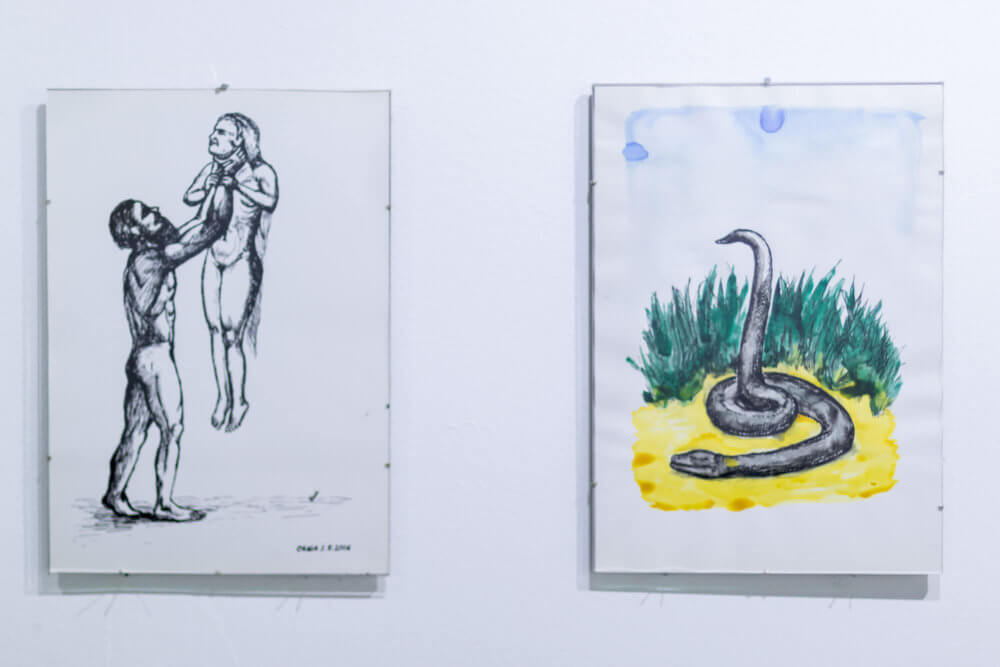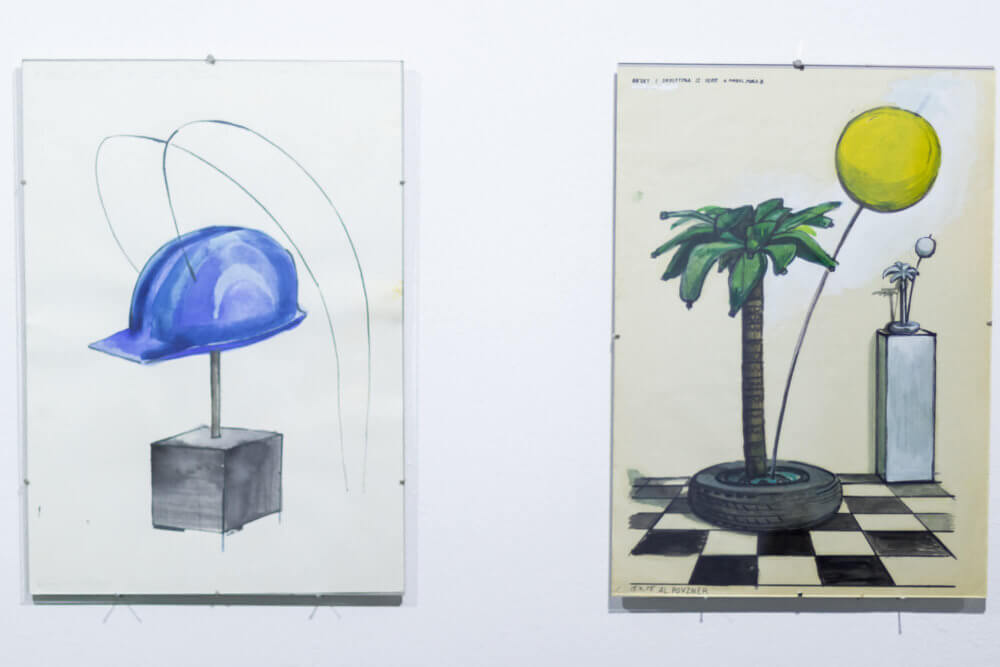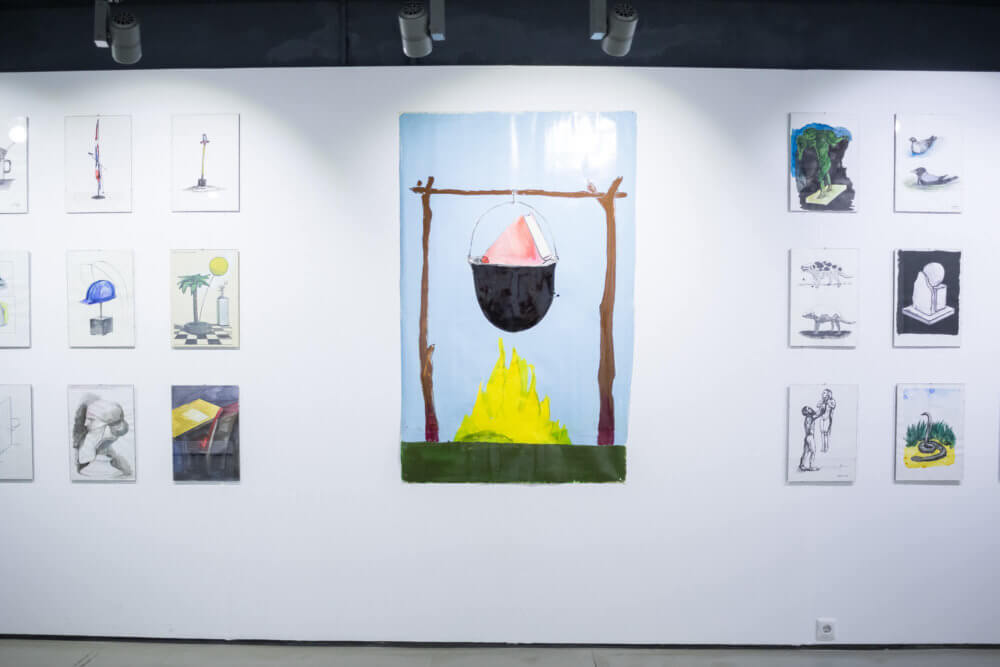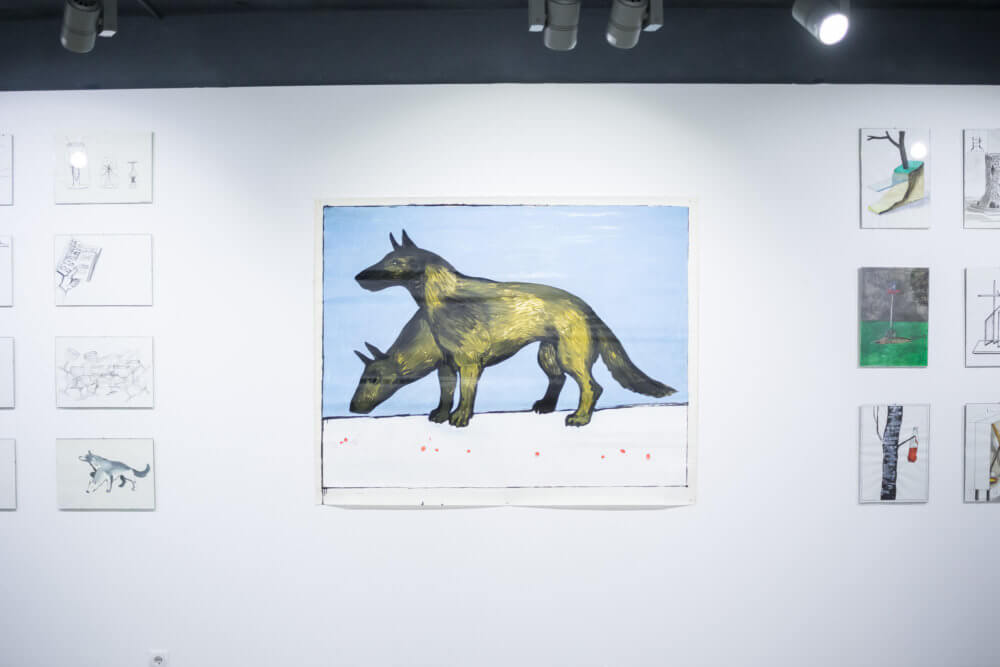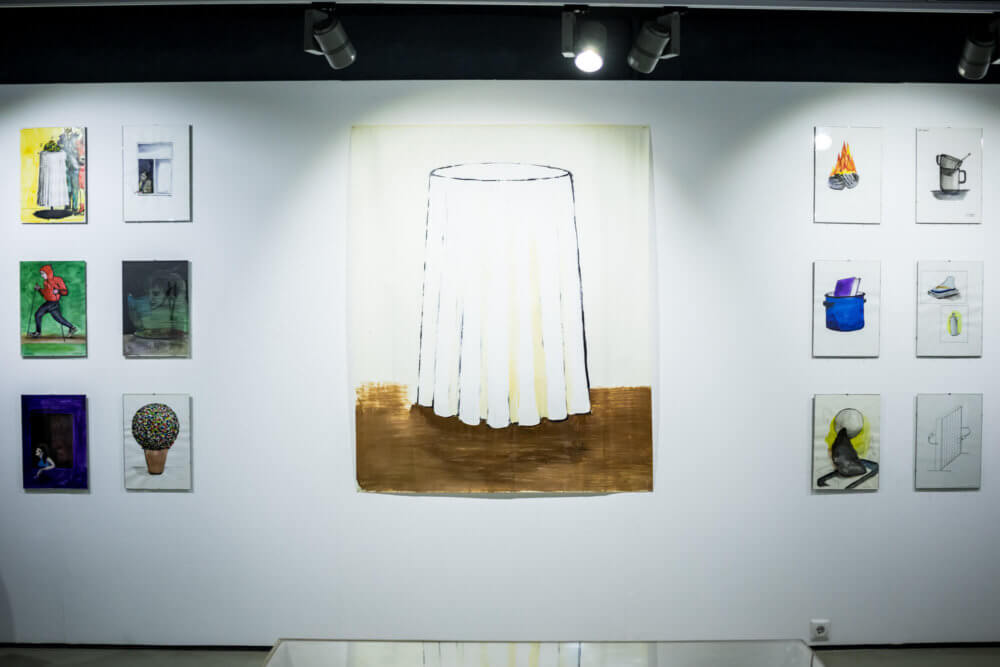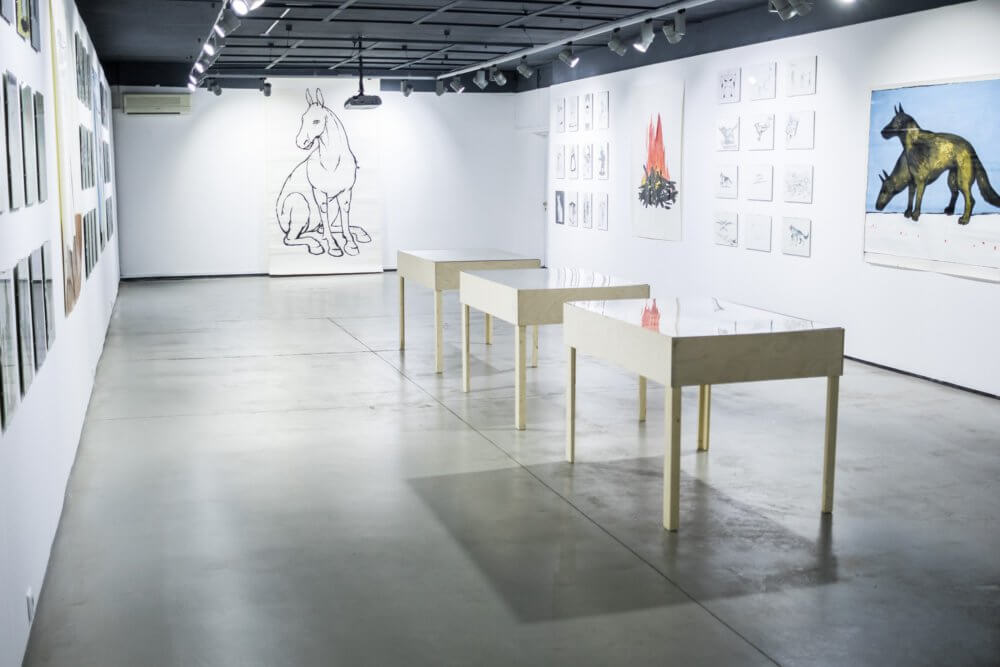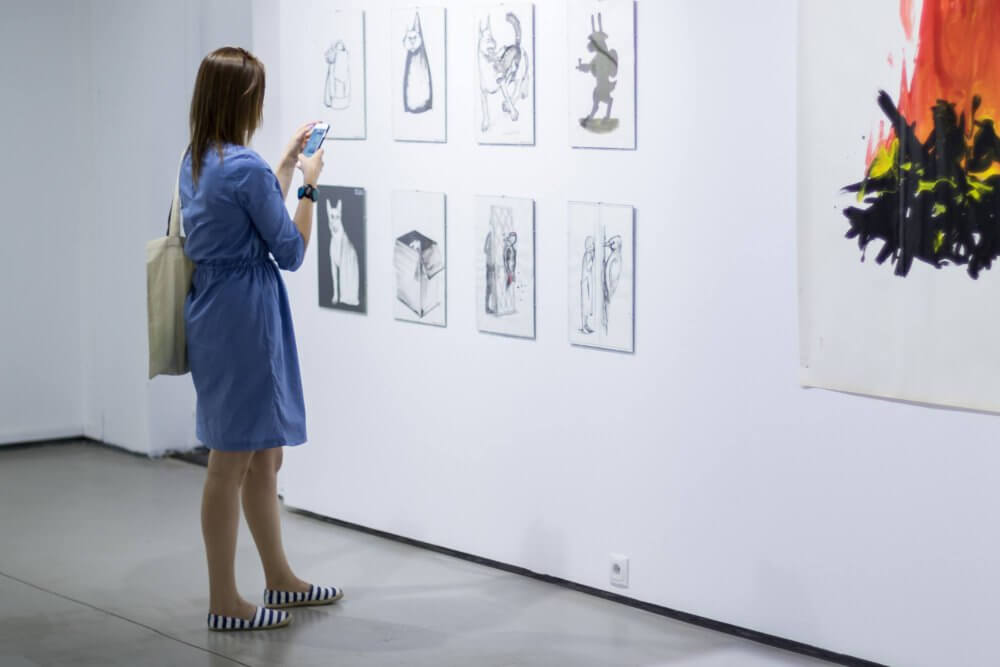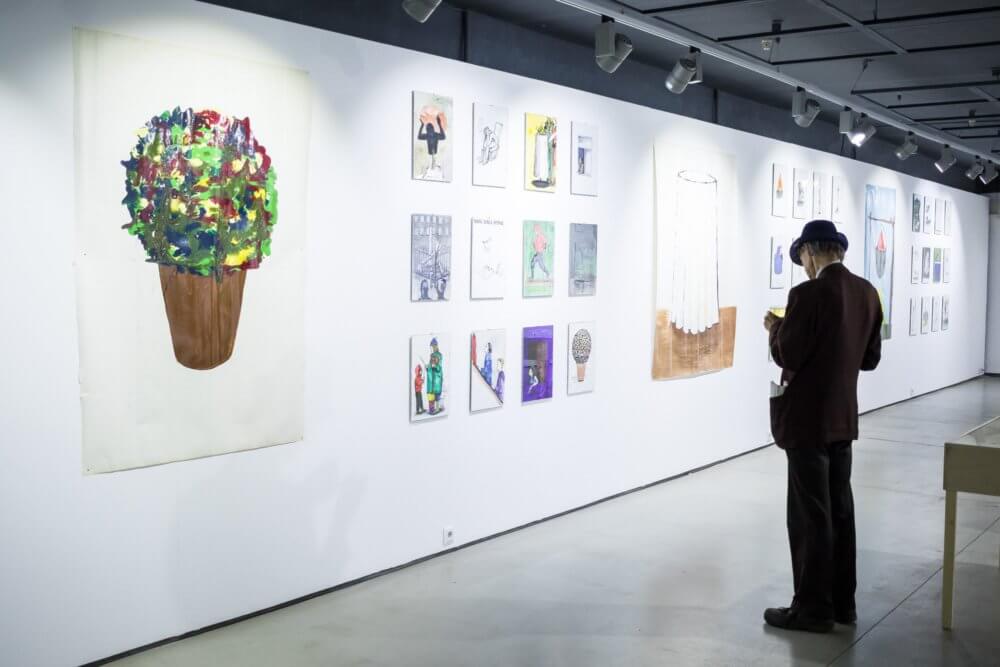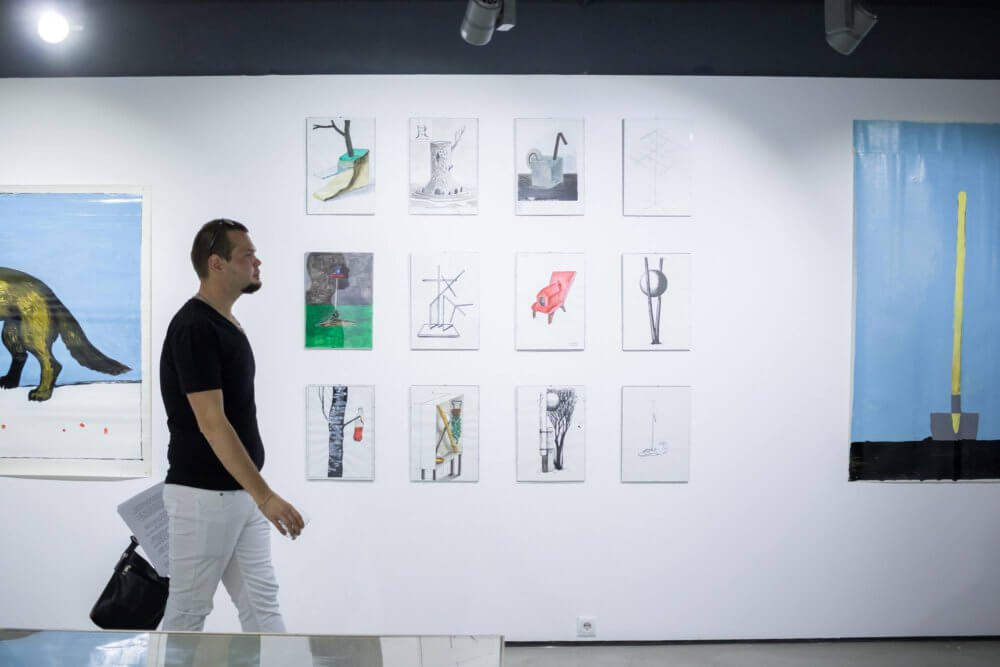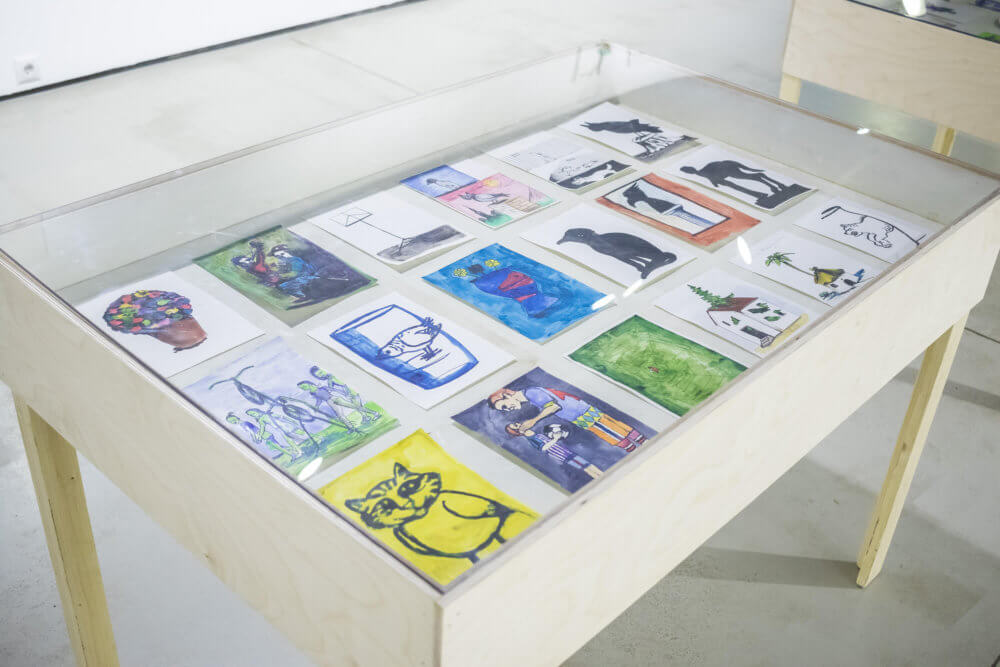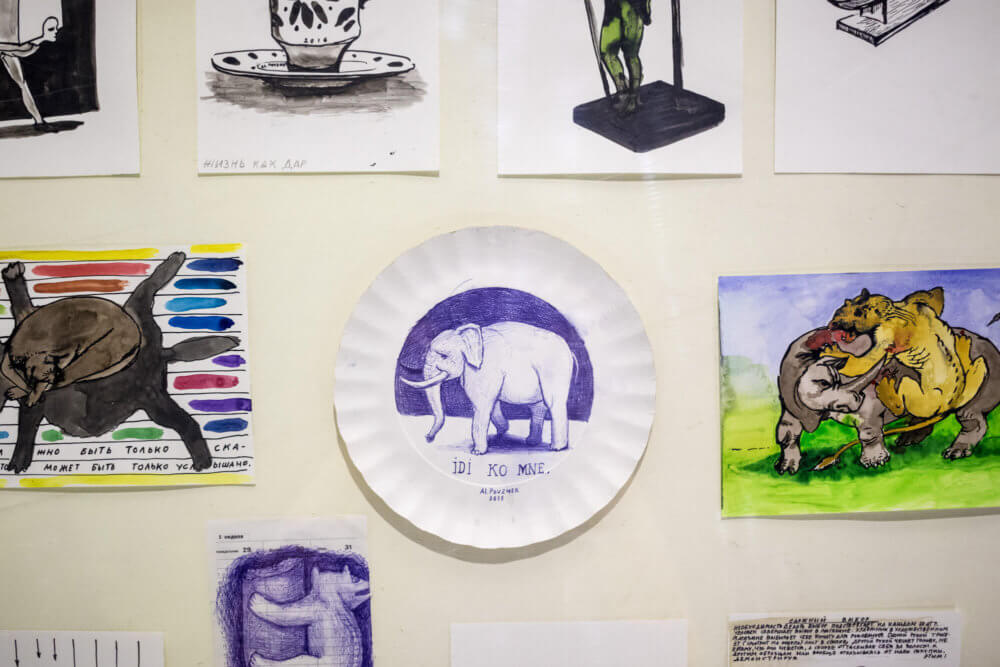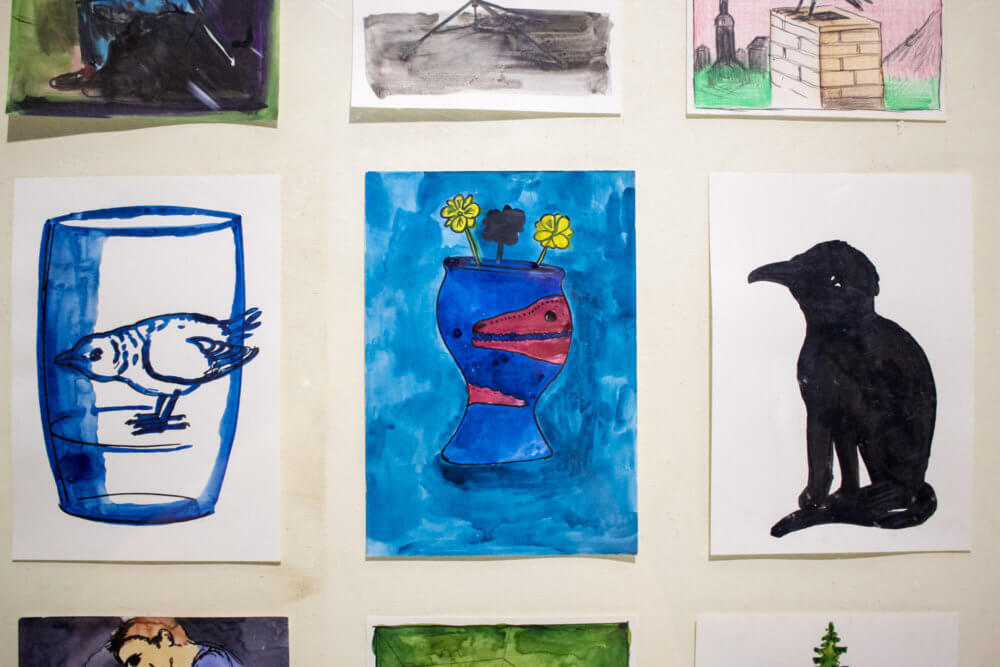Only Paper
2016
Peresvetov Pereulok Gallery, Moscow
curated by Elena Selina
If one would try to find a metaphor for the exhibition of Alexander Povzner’s drawings, perhaps, the most fitting would be the Tower of Babel. On display at the Peresvetov Pereulok Gallery are series of works that at first sight have nothing in common with each other. Interconnecting them is the personality of the author, the time of execution and, pretty much, the exhibition itself inevitably implying unification. However, Povzner intentionally defies any kind of filter or criterion of bringing the works together. It seems that each of the series could have grown into an independent exhibition statement. It doesn’t happen though. Perhaps, the reason why is the special status of drawing in the artist’s practice.
For a sculptor, drawing usually plays inferior role—that of a sketch or optional everyday activity, something like a night dream which is, in spite of its poetic nature, is instantly forgotten and, along with that, is often determined by the impressions received before sleep. For instance, there are a lot of birds and animals in Povzner’s drawings. In his own words, they have no special meaning and reference the abovementioned everyday feelings: as a child he used to watch a lot TV programs about these topics. Another good example is the series of drawings representing episodes of a formal dinner which is an allusion to the artist’s “duty” to attend exhibition openings. Povzner has symbolically pictured his work on the show in the form of a sun—a bunch of beams originating in the artist’s body, spreading outside and penetrating various life activities.
Was it possible to create a precise visual statement using the full range of materials? Yes. But in this case, the artist would have had to rid from a significant part of “life fabric” which, in his opinion, should not be disregarded. Povzner would have also appeared as a creatively established artist with individual visual language, transparent and clear for connoisseurs—a scenario completely unacceptable for him. Therefore, the search for completion, and the impossibility to achieve it, the lack and rejection of any rational game rules have become more important for him. On the other hand, Povzner always fights against the very exhibition format. Although today it is a dialogue rather than fight, carried on with varied success. Sometimes an exhibition takes it all, and the pieces line up so that the viewer gets clear visual message. Sometimes the artist is the winner, and then the show turns into an obscure world of night dreams, loosely pointing at some visual and conceptual hints. The latter is the way it happens at the show at the Peresvetov Pereulok Gallery, meaning the spectator has the chance to get absorbed in the usually hidden everyday of the artist without any formal agency.
In conclusion, I would like to mention another important thing. The drawings displayed at the exhibition clearly articulate Povzner’s signature methodology of image-making. From the viewer’s perspective, it might raise associations with the automatic writing technique and other practices aimed at organizing “a chance meeting on a dissecting table of a sewing machine and an umbrella”. The nerve of these works derives from contamination of unlinkable narratives, even though sometimes it gets on the level of materiality of sorts, producing “psychotic” portrait busts from fir needles, felt bells that never toll, etc. The show features a series exhibited for the first time where this principle of linking the unlinkable is broken. This series acquires key significance within the exposition as it plays the role of a counterpoint in arranging the entire material. What I mean here is a series of large-scale enamel drawings. Simple visual objects—a shovel, a bunch of flowers, a horse—whose persuasive power is achieved by means of defamiliarization. The most evident among these defamiliarizing effects is the bizarrely large size contrasting with the visitor’s expectations (because drawing as a medium is something moderate, something of a notebook format), or, perhaps, the glossy, even vulgar finish of enamel house paint which, on the one hand, attracts the eye just as bright displays of electronic devices do, but on the other—discredits the works due to its cheap look and inartistic functionality.
Although Povzner does not mix “a shovel with a book” (an expression he has used on a number of occasions), the resulting sequence of images is intense due to its simplicity (Man Ray’s photographs depicting big toes produce a similar effect). There is something more profound and ontological in Povzner’s new series than the obviously surreal nature of the everyday. The artist would have disagreed with me, insisting on the authentic attractiveness of simplicity and its visual, conceptual, mundane (the range of epithets can always be continued) and even everyday laconism, simplicity as a kind of desirable resolution of all the unsolvable contradictions. And possibly, I would have agreed with him after all. The exhibition however unfolds as a kaleidoscope of mutations—bird-humans, two-headed dogs, modern centaurs, etc. And yes, this “series of series” is also unfinished, leaving us in a state of uncomfortable hesitation towards some of the most obvious things the human world is made of.
Arseny Zhilyaev
Photo: Grigory Matveev
